Minnie
Pearl

-
Inducted1975
-
Born
October 25, 1912
-
Died
March 4, 1996
-
Birthplace
Centerville, Tennessee
Minnie Pearl was the undisputed queen of country comedy, known for her hopelessly styleless knee-length country dresses, her straw hat decorated with colorful plastic flowers and $1.98 price tag, and her cheerful shout of “How-DEE! I’m just so proud to be here!’’ For fifty years, she performed as a member of the Grand Ole Opry and, in 1992, was awarded the National Medal of Arts, the highest award given to artists by the United States government, for her half-century of work.
Developing Minnie Pearl
Born Sarah Ophelia Colley, she was the youngest of five daughters of a prosperous lumber magnate and his homemaker wife, who lost their fortune in the Great Depression. Aspiring to become an actress, twenty-two-year-old Colley settled for a job as an itinerant community theater director for the Wayne P. Sewell Producing Company, traveling to small southern communities and staging plays owned by the firm. While working in North Alabama, she met an elderly woman whose amusing country speech and mannerisms inspired Colley to create a comic character that eventually became known as Minnie Pearl.
In April 1939, Colley made her first professional appearance as her Minnie Pearl character at a women’s club function at the Highland Park Hotel in Aiken, South Carolina. In the fall of 1940, a chance opportunity to perform at a banker’s convention in Centerville brought her to the attention of radio executives from WSM in Nashville. On November 30, 1940, she made her debut on the station’s Grand Ole Opry. Within a week, more than 300 cards, telegrams, and letters addressed to Minnie Pearl flooded WSM’s offices. On December 7, 1940, the name Minnie Pearl appeared among the Opry cast listing for the first time in the weekly radio guide of the Nashville Tennessean newspaper, slotted in the 8:45 p.m. segment.
With the help of her sister Virginia and coaching from the Opry’s George D. Hay, Colley gradually developed a fully-fledged comedic character and jokes to go with it. Minnie Pearl became the quintessential small-town spinster, preoccupied with chasing men and gossiping about her family and neighbors in the mythical town of Grinder’s Switch—Brother, Uncle Nabob, and sometime boyfriend Hezzie. In the spring of 1942, she graduated to the elite cast of the Opry when she joined The Prince Albert Show, the half hour of the Opry broadcast over the NBC radio network. Not long after receiving her promotion, Colley added a distinctive new touch to her act. At the request of the William Esty advertising agency, which held the sponsor’s account, she dropped her usual wallflower’s shy “Howdy” in favor of a shouted “How-DEE!” that called for an audience response. It quickly became one of her trademarks.
Songs
00:00 / 00:00
00:00 / 00:00
00:00 / 00:00
Reigning Queen of Country Comedy
On February 23, 1947, Colley married Henry Cannon, a former Army Air Corps pilot and a partner in the charter airplane service Capitol Airways. Before long, he left Capitol Airways and set up his own charter service specializing in the country music business, flying a Beechcraft single-engine plane. Clients included Eddy Arnold and his then-manager Tom Parker, Hank Williams, Carl Smith, Webb Pierce, and eventually Elvis Presley. Client number one was his wife, who soon became known in Nashville society circles as Sarah Cannon. In addition to transporting his wife, Cannon also managed her career.
From 1948 to 1958, Minnie worked the Grand Ole Opry with veteran comedian Rod Brasfield. They did what was called “double comedy,” meaning that neither one always played the straight man. Depending on how they felt, one or the other might take the punchline. Brasfield’s death in 1958 ended their long partnership.
Videos
comedy routine with Rod Brasfield
Stars of the Grand Ole Opry, 1955.
excerpt from Old Times: Minnie Pearl film
1988
Photos
-
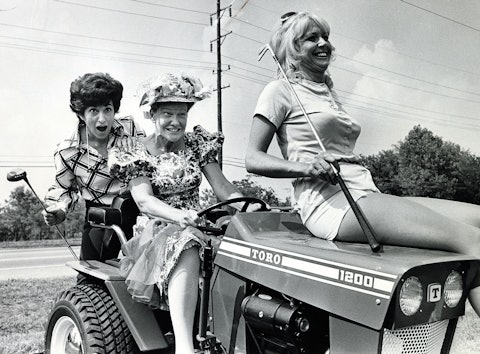
From left: Felice Bryant, Minnie Pearl, and Demetriss Tapp riding a Toro tractor and holding golf clubs during an event called the “Cancer Crusade.” Photo by Joe Rudis of the Tennessean.
-
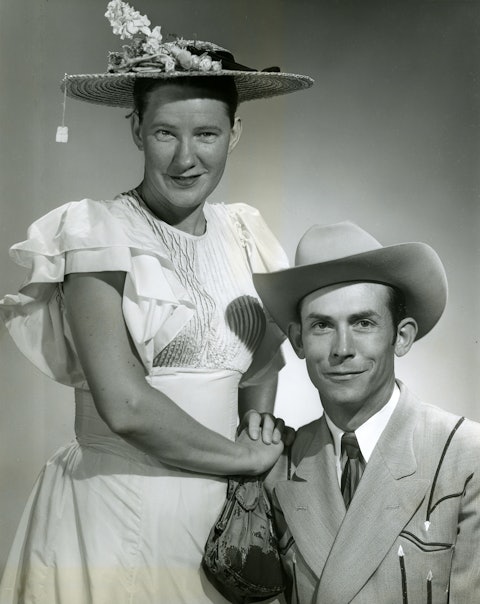
Studio portrait of Minnie Pearl and Hank Williams, c. 1951. Photo by Walden S. Fabry Studios.
-
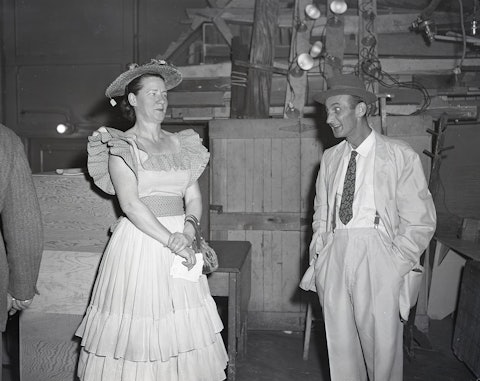
Minnie Pearl and Rod Brasfield, probably backstage at the Ryman Auditorium, 1950s. Photo by Elmer Williams.
-
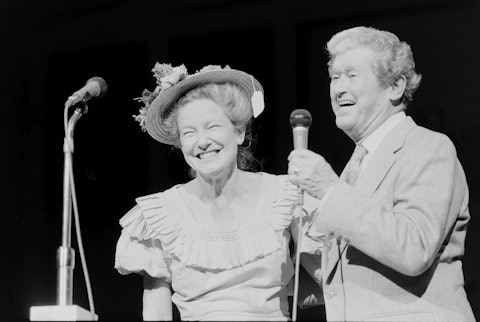
Minnie Pearl and Roy Acuff onstage, 1988. Photo by Raeanne Rubenstein.
-
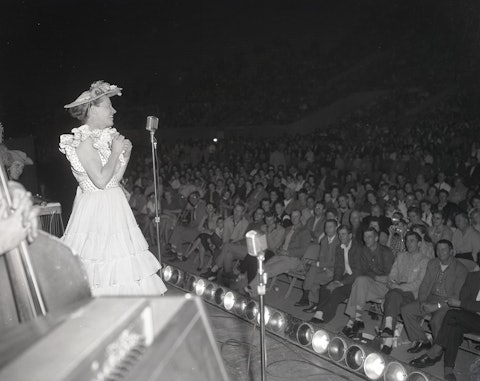
Minnie Pearl performing onstage, c. late 1950s. Photo by Elmer Williams.
-
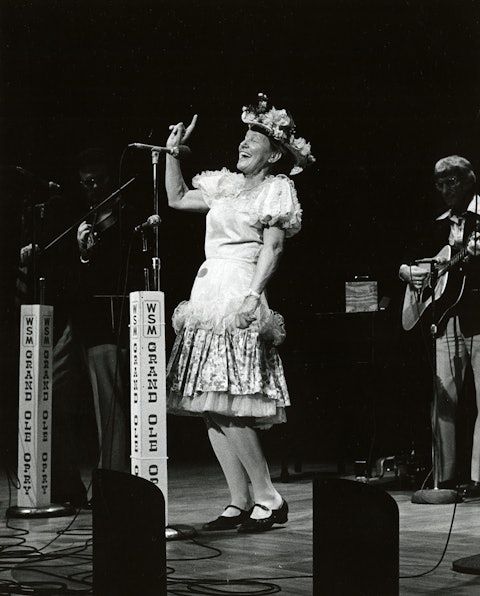
Minnie Pearl performing onstage, 1975. Photo by Les Leverett.
-
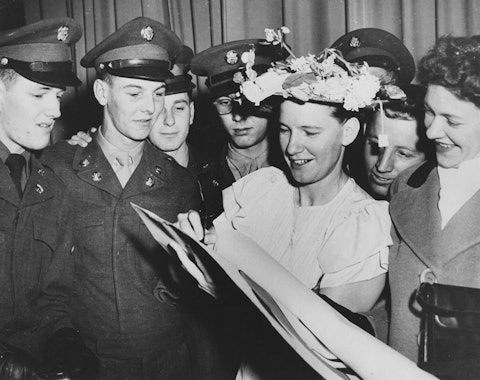
Minnie Pearl signing autographs for soldiers during World War II, 1942.
-
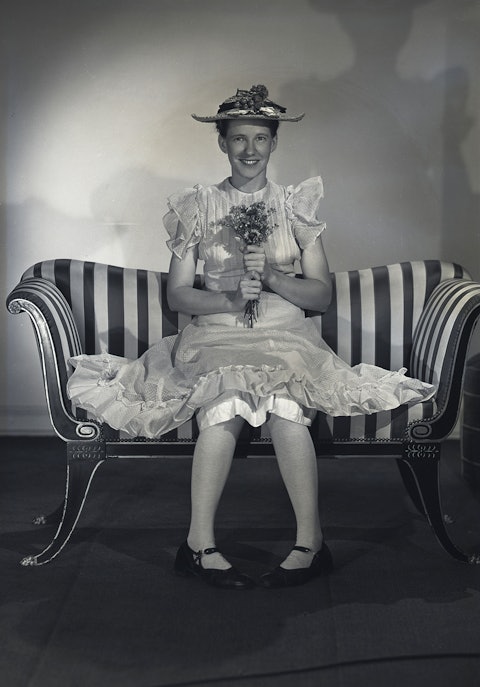
Studio portrait of Minnie Pearl, 1953. Photo by Walden S. Fabry Studios.
-
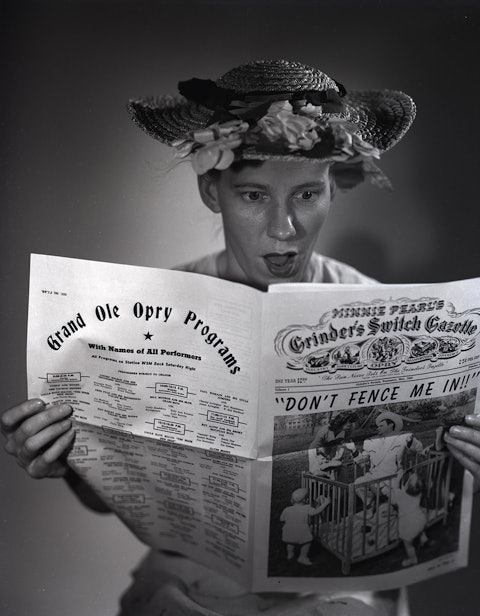
Studio portrait of Minnie Pearl holding a copy of Minnie Pearl’s Grinder's Switch Gazette, 1945. Photo by Walden S. Fabry Studios.
-

Studio portrait of Minnie Pearl, 1961. Photo by Walden S. Fabry Studios.
Frequent Appearances on Television
Following a 1957 appearance on NBC-TV’s top-rated This Is Your Life, hosted by Ralph Edwards, Colley began making more appearances as her Minnie Pearl character on NBC-TV shows hosted by Tennessee Ernie Ford and Dinah Shore as well as The Tonight Show. In the sixties, she branched out to The Carol Burnett Show and The Jonathan Winters Show, whose producer, Sam Lovullo, recruited her for Hee Haw’s cast in 1969. There, she reached a wider audience than ever in her various continuing roles as a teacher in a one-room schoolhouse, a house mother in a girl’s dormitory, editor of The Grinder’s Switch Gazette, and the tough-to-get-along-with passenger in the “Driving Miss Minnie” segments. In the 1980s, Colley began appearing each Friday night on TNN’s Nashville Now, joking with host Ralph Emery for the “Let Minnie Steal Your Joke’’ segment. She continued to play the Grand Ole Opry as well, frequently teaming in later years with Roy Acuff.
During her career, Colley recorded a half-dozen albums and about twice as many singles with such labels as Bullet, King, RCA, Everest, and Starday. Most of her records were monologues. When she did sing, she exaggerated the flaws in her voice. She had only one hit, “Giddyup Go–Answer,” a maudlin recitation that “answered” a similarly maudlin recitation by Red Sovine. It did not reflect her usual comedic style, and, although it became a #10 hit in 1966, she rarely mentioned it.
Colley performed her last public show in Joliet, Illinois, on June 15, 1991. Two days later, she suffered a serious stroke that left her virtually bedridden in a Nashville nursing home for the next five years. When she died, following a final series of strokes, in 1996, all of Nashville, and, indeed, much of the world, mourned her passing.
—Paul Kingsbury
Adapted from the Country Music Hall of Fame® and Museum’s Encyclopedia of Country Music, published by Oxford University Press



